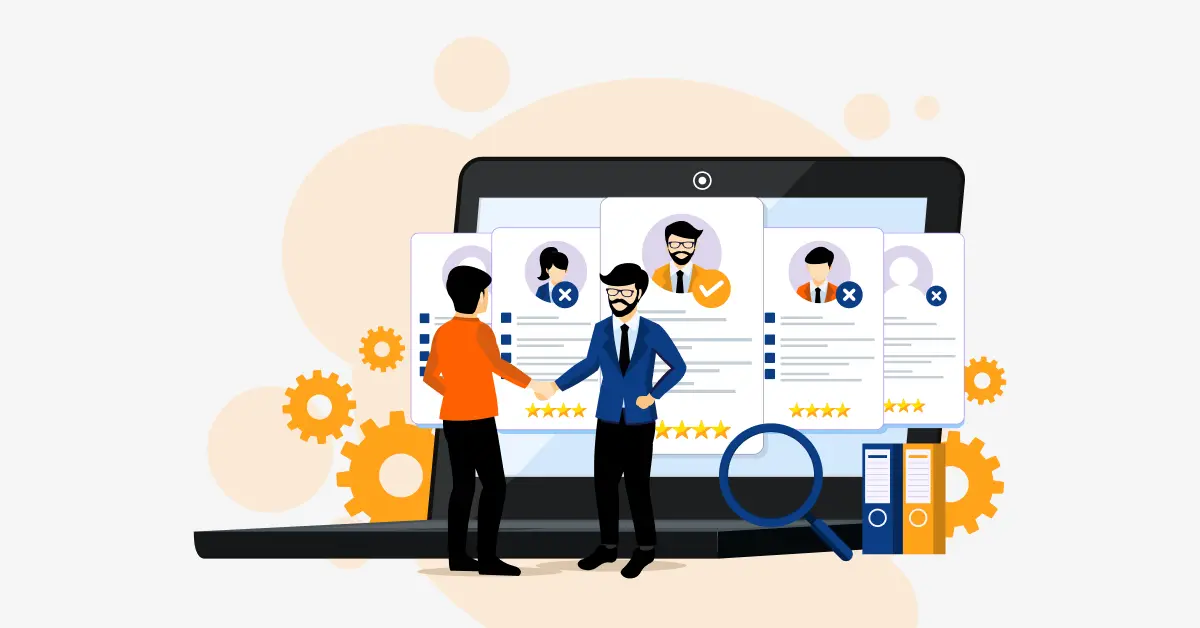
Managing employees well is important for any business that wants to grow and be successful over the long term. Strong management methods are even more important now that mixed and online work are becoming more common. When you manage your workers well, they will stay inspired, creative, and aligned with the organization’s goals.
This article will discuss the top 10 ways to manage employees, focusing on the importance of tools and methods like time management systems or employee monitoring software.
Table of contents
- Top 10 Strategies to Manage Employees
- 1. Implement Time Tracking Software
- 2. Leverage Workforce Analytics
- 3. Foster Clear Communication Channels
- 4. Utilize Employee Monitoring Software
- 5. Promote a Positive Work Environment
- 6. Implement User Behaviour Analytics
- 7. Offer Flexible Work Arrangements
- 8. Invest in Employee Development
- 9. Use Employee Productivity Tools
- 10. Set Clear Goals and Expectations
- Conclusion
Top 10 Strategies to Manage Employees
Here are the top 10 strategies for managing employees. Each strategy is essential. Let’s take a quick look at each strategy.
1. Implement Time Tracking Software
Time-tracking system is an important part of managing workers, especially when managing a mixed or online workforce. Leapmax’s employee monitoring tool lets you keep track of all of your workers’ time and see how they spend their work hours. This software helps managers find patterns in employee output, make the best use of time, and ensure that plans are followed to the letter.
2. Leverage Workforce Analytics
Workforce analytics can tell you much about how your employees work and behave. Managers can make smart choices about improving employee efficiency by looking at data on attendance, project finish rates, and other measures. 61% of businesses state that monitoring has improved employee performance. Workforce tracking tools help you see where your workers are doing a great job and where they might need more help or training.
3. Foster Clear Communication Channels
Every business needs to adopt a channel for managing employees and keeping track of customers because the most important thing about handling customers well is being able to talk to them. Making it simple for work-from-home employees to talk to each other will help them understand and be heard. They can do their jobs better if they meet regularly, give feedback, and use communication tools to ensure everyone is on the same page.
4. Utilize Employee Monitoring Software
Employee monitoring software is important for tracking what they do at work, especially when managing a remote workforce. For example, Leapmax has tools that let managers track their employees’ productivity without getting in the way. This software helps workers stay on task and finish their work on time.
5. Promote a Positive Work Environment
A good work setting is very important for getting people to work harder and 61% of businesses state that monitoring has improved employee performance. Promoting a culture of thanks and praise makes people happier and more motivated to do their best work. Simple things like recognizing accomplishments and giving helpful comments can have a big effect on how employee productivity.
6. Implement User Behaviour Analytics
User behavior analytics help companies determine how their employees use digital tools and platforms. Users can make processes more efficient, and the whole system works better with this knowledge. By looking at how users act, managers can find trends that cause delays and fix them to make things run more smoothly.
7. Offer Flexible Work Arrangements
For companies to use mixed workforce management, they must ensure that all their workers can set their hours. Being able to pick your hours and place of work can make you more effective and happy at work. Meeting the personal and business needs of workers can get them more involved and committed to their jobs.
8. Invest in Employee Development
Setting goals for your employees to learn and grow is a big part of being a good boss. People who are trained, taught, and given the chance to move up in their jobs stay updated on changes in their field and get better at what they do. By putting money into employees’ growth, the company can improve workforce efficiency.
9. Use Employee Productivity Tools
Every company must adhere to employee productivity tools for employee productivity tracking, like project management tools and communication platforms that help workers get more done, make their jobs easy, and help teams work together better. There is more work getting done because of these tools because they help people plan their days, figure out what’s most important, and work together better. There are a number of tools in Leapmax that are meant to help you get your work done faster and better.
10. Set Clear Goals and Expectations
You need to set clear goals and rules for how to deal with customers well. It is important for everyone who works for the company to know what their role is and how it fits into the bigger plan. People who work for the company will stay inspired and on track with its mission if these goals are looked at and changed often.
Conclusion
Remote workforce management involves many things and needs the right mix of tools, tactics, and communication. Companies can greatly increase the operational efficiency and productivity of their workers by using time-tracking tools, workforce data, clear communication, and a happy work environment.
To manage a diverse staff, it’s also important to offer open work schedules, put money into employee growth, and set clear goals. Companies like Leapmax using tools like it are very important to these tactics and help companies reach their goals for hybrid workforce management. Using these top 10 tactics will not only help employees do their jobs better, but it will also help the company succeed as a whole.
Recent Posts
Contact us
Related Posts

Know All About Hybrid Workplace Strategy: Steps to Consider
Today, hybrid workplace strategies are a revolutionary approach to workplace…..
Read More





